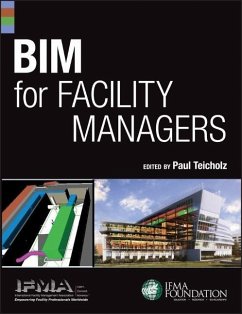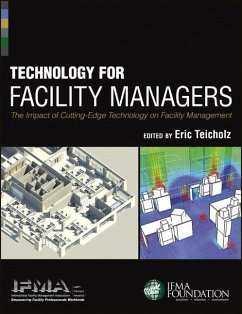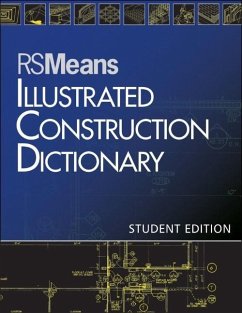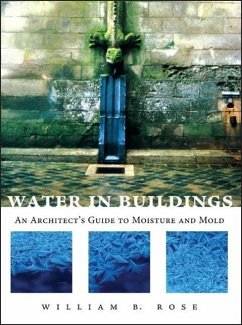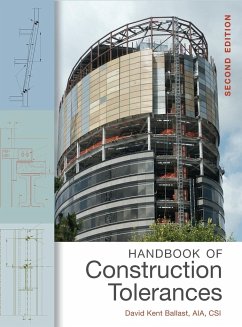
Sustainable Preservation
Greening Existing Buildings
Collab.: Moe, Richard

PAYBACK Punkte
43 °P sammeln!
A guide to green strategies for preservation and adaptive reuse--and the power of preservation/reuse as a green strategy.Buildings account for nearly forty percent of both total energy use and carbon emissions in the United States. With one of the country's leading preservation architects as your guide, Sustainable Preservation explores the power of adaptive reuse to reduce those numbers and move us toward sustainability. It shows how an icon such as H.H. Richardson's Trinity Church in Boston can go green--and why a 1970s strip-mall supermarket not only deserves similar attention but can also ...
A guide to green strategies for preservation and adaptive reuse--and the power of preservation/reuse as a green strategy.
Buildings account for nearly forty percent of both total energy use and carbon emissions in the United States. With one of the country's leading preservation architects as your guide, Sustainable Preservation explores the power of adaptive reuse to reduce those numbers and move us toward sustainability. It shows how an icon such as H.H. Richardson's Trinity Church in Boston can go green--and why a 1970s strip-mall supermarket not only deserves similar attention but can also emerge as a building that delights users.
Sustainable Preservation takes a nuanced look at the hundreds of choices that adaptive reuse requires architects to make--from ingenious ways to redeploy existing structural elements to time-honored techniques for natural ventilation to creation of wetlands that restore a site's natural biological functions. In addition, Sustainable Preservation:
Presents fifty case studies of projects--schools, houses, offices, stores, museums, and government buildings--that set new standards for holistic approaches to adaptive reuse and sustainability
Covers design issues, from building location to lighting systems, renewable power options, stormwater handling, and building envelope protection and integrity.
Reviews operational issues, including materials choices for low lifetime maintenance, green housekeeping, and indoor air quality
Explains calculators and programs that supplement the LEED(r) green building certification program requirements to yield even greater environmental benefits
Sustainable Preservation makes a compelling argument that preservation and sustainability don't just protect the environment, but deliver a full range of societal benefits, from job creation to stronger social connection.
On the Cover: Trinity Church in Boston: Under the leadership of Jean Carroon, Goody Clancy recently completed restoration and expansion of H.H. Richardson's 1877 masterpiece, Trinity Church. Significant environmental aspects include a new below-grade assembly space that incorporates the structure's massive stone piers; installation of ground-source heat pumps that dramatically reduce heating and cooling requirements; complete on-site management of all stormwater; and full use of local, recycled, and low-VOC materials.
Buildings account for nearly forty percent of both total energy use and carbon emissions in the United States. With one of the country's leading preservation architects as your guide, Sustainable Preservation explores the power of adaptive reuse to reduce those numbers and move us toward sustainability. It shows how an icon such as H.H. Richardson's Trinity Church in Boston can go green--and why a 1970s strip-mall supermarket not only deserves similar attention but can also emerge as a building that delights users.
Sustainable Preservation takes a nuanced look at the hundreds of choices that adaptive reuse requires architects to make--from ingenious ways to redeploy existing structural elements to time-honored techniques for natural ventilation to creation of wetlands that restore a site's natural biological functions. In addition, Sustainable Preservation:
Presents fifty case studies of projects--schools, houses, offices, stores, museums, and government buildings--that set new standards for holistic approaches to adaptive reuse and sustainability
Covers design issues, from building location to lighting systems, renewable power options, stormwater handling, and building envelope protection and integrity.
Reviews operational issues, including materials choices for low lifetime maintenance, green housekeeping, and indoor air quality
Explains calculators and programs that supplement the LEED(r) green building certification program requirements to yield even greater environmental benefits
Sustainable Preservation makes a compelling argument that preservation and sustainability don't just protect the environment, but deliver a full range of societal benefits, from job creation to stronger social connection.
On the Cover: Trinity Church in Boston: Under the leadership of Jean Carroon, Goody Clancy recently completed restoration and expansion of H.H. Richardson's 1877 masterpiece, Trinity Church. Significant environmental aspects include a new below-grade assembly space that incorporates the structure's massive stone piers; installation of ground-source heat pumps that dramatically reduce heating and cooling requirements; complete on-site management of all stormwater; and full use of local, recycled, and low-VOC materials.




